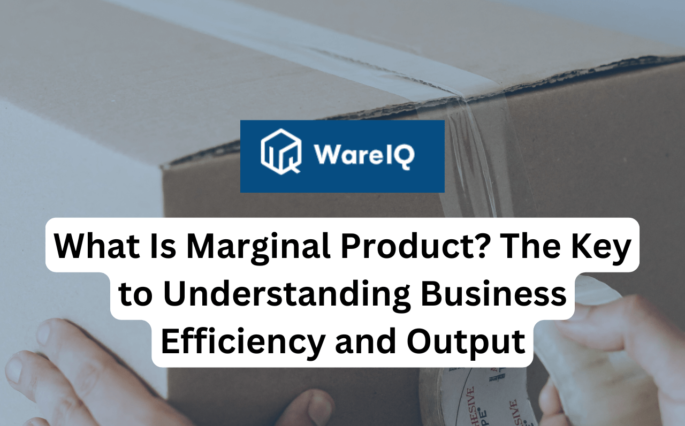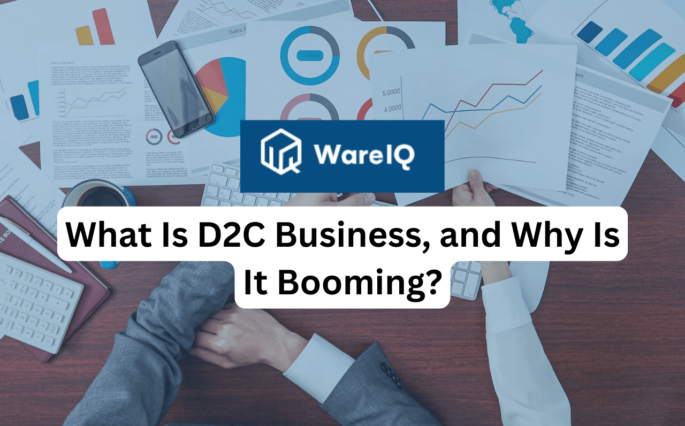Integrated Logistics: Unleashing the Power of Seamless Operations


In the ever-evolving landscape of supply chain management, the concept of integrated logistics has emerged as a critical driver of efficiency and seamless operations. Integrated logistics, at its core, represents a comprehensive approach to the coordination and optimisation of various processes involved in the supply chain. It transcends traditional silos, fostering synergy among different facets like procurement, transportation, and distribution.
This article delves into the nuances of integrated logistics, exploring its definition, mechanisms, and the profound impact it has on modern business operations. As we navigate through the intricacies, you will gain insights into how integrated logistics systems work, the management principles that underpin them, and the inclusive nature of these systems. Join us on this journey to uncover the transformative power of integrated type logistics in shaping the future of supply chain dynamics.
- What Is Integrated Logistics and Its Definition?
- Explain the Integrated Logistics System and How It Works
- Explaining the System of Integrated Logistics Management
- Explain What All Integrated Logistics Systems Include
- Conclusion
- FAQs About Integrated Logistics
- What are the critical components of an Integrated Logistics System?
- How does Integrated Logistics contribute to cost savings in supply chain operations?
- Can small businesses benefit from Integrated Logistics?
- What role does technology play in Integrated Logistics?
- How can businesses overcome challenges in implementing Integrated Logistics?
- What are the long-term benefits of adopting Integrated Logistics?
What Is Integrated Logistics and Its Definition?
Integrated logistics, in its essence, is a holistic approach to managing and optimising the entire supply chain process. It goes beyond the conventional understanding of logistics by incorporating various elements like procurement, production, transportation, and distribution into a unified, seamless system. At its core, integrated logistics is about breaking down silos and fostering collaboration among different functions, suppliers, and stakeholders. It aims to streamline operations, enhance efficiency, and ultimately deliver a superior experience to customers.
The definition of integrated logistics lies in its ability to create a synchronised network where each component works in harmony with the others, eliminating redundancies and improving overall performance. In essence, it is the orchestration of diverse activities to ensure a smooth, end-to-end flow of goods and information across the supply chain. As we delve deeper into this concept, we’ll uncover the intricacies of how integrated logistics functions and its transformative impact on the logistics landscape.
Explain the Integrated Logistics System and How It Works
An integrated logistics system is a sophisticated framework that unifies various elements of the supply chain to operate cohesively. It leverages technology, data analytics, and strategic collaboration to optimise processes and enhance overall efficiency. The system is designed to seamlessly connect suppliers, manufacturers, distributors, and retailers, fostering real-time communication and coordination.
At the heart of an integrated logistics system is advanced technology, such as enterprise resource planning systems (ERP), warehouse management systems (WMS), transportation management systems (TMS ), etc. These technologies work in tandem to provide a comprehensive view of the entire supply chain, enabling quick decision-making and minimising delays.
The functioning of this system involves the integration of critical processes like inventory management, order processing, transportation, and demand forecasting. For instance, when a customer places an order, the system can automatically trigger actions such as inventory updates, order fulfilment, and transportation scheduling. This level of automation and connectivity ensures a more agile and responsive supply chain capable of adapting to dynamic market demands.
Related article: What is Sustainable Logistics?
Explaining the System of Integrated Logistics Management
Integrated Logistics Management (ILM) is the holistic approach to overseeing and coordinating all the activities involved in the supply chain within an organisation. It goes beyond the traditional logistics functions and incorporates a broader perspective, integrating functions such as procurement, production, distribution, and customer service.
The primary goal of ILM is to ensure a seamless flow of materials, information, and services throughout the supply chain. This is achieved by breaking down silos between different departments and functions within a company, fostering collaboration and improving communication.
ILM utilises advanced technologies and software solutions to facilitate real-time data sharing and decision-making. This includes the implementation of ERP systems, which integrate various business processes and provide a centralised platform for managing information related to finance, human resources, and supply chain operations.
Moreover, ILM involves optimising transportation and distribution networks, strategically placing warehouses, and implementing efficient inventory management practices. By aligning these elements, organisations can achieve cost savings, reduce lead times, and enhance overall customer satisfaction.
Related article to read: Best Strategies to Streamline Logistics Planning [2024]
Explain What All Integrated Logistics Systems Include
An all-encompassing Integrated Logistics System goes beyond mere coordination; it entails the seamless integration of various components, technologies, and processes to create a unified and efficient supply chain ecosystem. Here’s a breakdown of what an all-integrated logistics system typically includes:
Technology Integration
Integration of cutting-edge technologies such as Internet of Things (IoT), Artificial Intelligence (AI), and advanced analytics. This facilitates real-time monitoring, data-driven decision-making, and predictive analysis, enhancing overall operational visibility.
Communication Networks
Robust communication channels connect different stakeholders in the supply chain. This ensures instant and accurate information exchange between suppliers, manufacturers, distributors, and retailers.
Collaborative Planning
This logistics involves collaborative planning processes that enable stakeholders to share forecasts, demand projections, and production plans. This fosters better alignment and coordination across the supply chain.
Inventory Management
A unified system for managing inventory levels across the supply chain. This includes real-time tracking of stock levels, automated replenishment processes, and optimisation techniques to minimise holding costs.
Order Fulfillment
Integration of order processing, picking, packing, and shipping functions. This ensures timely and accurate order fulfilment, reducing lead times and enhancing customer satisfaction.
Transportation Management
An integrated approach to managing transportation, including route optimisation, carrier selection, and real-time tracking. This minimises transit times, reduces transportation costs, and improves overall logistics efficiency.
Warehousing Integration
Seamless coordination between different warehouse functions, including receiving, storage, and order picking. This integration optimises warehouse space, reduces storage costs, and enhances order processing efficiency.
Visibility and Transparency
A comprehensive system that provides end-to-end visibility and transparency into the entire supply chain. This includes real-time tracking, monitoring, and reporting capabilities for better decision-making.
Implementing an all-advanced logistics system requires a strategic investment in technology, infrastructure, and process redesign. However, the benefits, including cost savings, improved customer service, and enhanced agility, make it a compelling proposition for organisations aiming to stay competitive in today’s dynamic business landscape.
Conclusion
In conclusion, integrated logistics stands as a pivotal strategy in modern supply chain management, offering a holistic approach to streamlining operations and boosting overall efficiency. The integration of technology, communication networks, collaborative planning, inventory management, order fulfilment, transportation, and warehousing creates a synergistic supply chain ecosystem. The concept goes beyond traditional logistics, emphasising a seamless flow of information, goods, and services throughout the entire supply chain. By adopting Integrated Logistics, businesses can respond more effectively to market demands, reduce operational costs, and enhance customer satisfaction.
As organisations navigate the complexities of global markets, the importance of integrated logistics becomes increasingly evident. The ability to adapt to changing consumer preferences, optimise resources, and mitigate risks is crucial for sustained success. Integrated Logistics not only addresses these challenges but also provides a foundation for resilience and growth in the ever-evolving landscape of supply chain management. Embracing this comprehensive approach positions businesses to thrive in the face of competition and market dynamics, ultimately leading to a more agile, responsive, and profitable operation.
FAQs About Integrated Logistics
What are the critical components of an Integrated Logistics System?
An Integrated Logistics System encompasses various components, including robust communication networks, advanced technologies, collaborative planning, efficient inventory management, streamlined order fulfilment, optimised transportation, and well-organised warehousing.
How does Integrated Logistics contribute to cost savings in supply chain operations?
It leads to cost savings by minimising redundancies, optimising resource utilisation, and enhancing overall operational efficiency. The seamless coordination of various logistics functions reduces delays and lowers the overall cost of transportation, storage, and order fulfilment.
Can small businesses benefit from Integrated Logistics?
Yes, small businesses can benefit significantly from Integrated Logistics. While the scale of operations may differ, the principles of integrated logistics—such as efficient communication, streamlined processes, and collaborative planning—can be tailored to suit the specific needs of small businesses, fostering growth and competitiveness.
What role does technology play in Integrated Logistics?
Technology is a cornerstone of Integrated Logistics, facilitating real-time communication, data analytics, and automation. Advanced technologies, including the Internet of Things (IoT), artificial intelligence, and cloud computing, play a crucial role in enhancing visibility, decision-making, and overall supply chain performance.
How can businesses overcome challenges in implementing Integrated Logistics?
Overcoming challenges in Integrated Logistics involves careful planning, stakeholder collaboration, and investing in the right technologies. Businesses should conduct thorough assessments, identify potential bottlenecks, and gradually implement integrated solutions to ensure a smooth transition.
What are the long-term benefits of adopting Integrated Logistics?
The long-term benefits of Integrated Logistics include improved customer satisfaction, enhanced competitiveness, greater adaptability to market changes, and increased profitability. Businesses that successfully implement Integrated type of Logistics create a resilient supply chain foundation for sustained success in the dynamic business environment.








